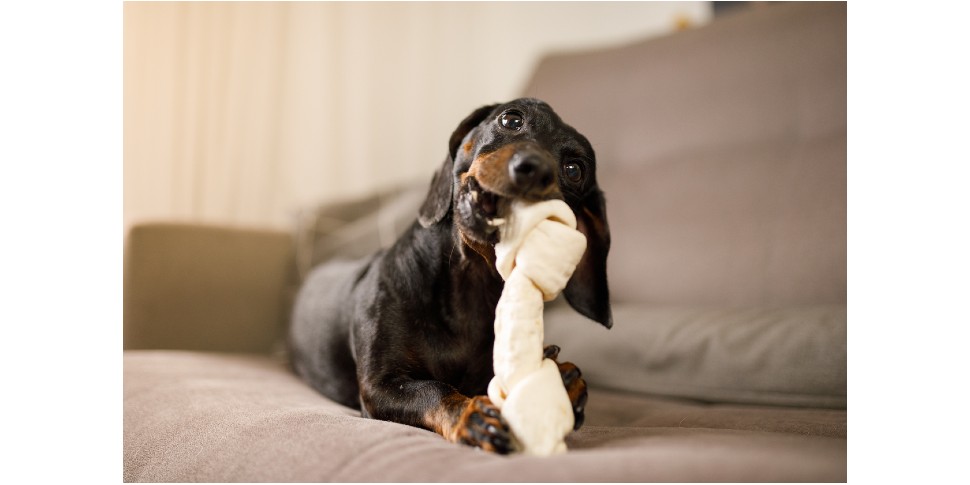Why Does My Dog Chew on Furniture?

While having a dog as a companion can be a wonderful experience, there are times when your pet’s behavior may be less than desirable. Many dogs act on their animal instincts by chomping on your couches and chairs, which can be terrible for your living room’s look and your patience as a pet owner.
If you’re interested in finding out why your dog chews furniture, start by considering these factors:
- Your dog’s age and teething patterns
- How new the environment is to your dog
- How stressed your dog is at home
- The amount of exercise your dog gets every day
- Your dog’s eating patterns
You can curb your dog’s furniture-chewing behavior with the right approach based on your dog’s situation. Here are a few ideas to consider:
Dog Crate
Consider purchasing a dog crate if your dog is stressed about not having a place to be alone. A dog crate gives your dog a sense of ownership and helps them easily mark their territory to make themselves feel at home in your abode. There are several affordable dog crates on the market, many of which can be customized to your liking. Ensure that the bars are not too thin and the space is wide enough so your puppy doesn’t feel trapped. You have to keep the crate neat at all times if you want your dog to enjoy being inside of it and leave your furniture alone!
Shock Collar
While this approach might not be a go-to option for some pet owners, it can be effective in certain situations. A shock collar ensures that your destructive dog stays restrained and on their best behavior inside and outside your house. Your dog will understand the message a shock collar delivers quickly and stop chewing on furniture, where traditional training could take much longer.
These collars are designed to deliver safe shock stimulations. You can set it at the lowest and intensify it based on the situation. It has a warning vibration setting to keep the dog aware of what will happen if an undesired behavior persists, eventually reducing the need for any shock to be administered.
Dog Treats
Your dog might chew the furniture as an expression of hunger. Perhaps the diet your pet is on isn’t working, leading your dog to chew on the furniture to express frustration or hunger. You could offer your pet treats to help reinforce good behavior and keep your pet nourished and entertained. There are affordable and healthy treat options such as biscuits & cookies, peanut butter, bones, sticks, beef jerky, and more, each made for all kinds of dogs. Avoid giving your dog any reward for bad behavior and furniture chewing and they will get the message.
Dog Gate
If your dog makes messes wherever they go, it may be time to dog-proof your home. A dog gate will keep your dogs out of your furniture and contain them in their own living space. If your dog’s chewing habits are becoming unbearable and a crate isn’t a good option for them, installing a gate may be your best bet. This can help them retain their freedom while establishing and maintaining boundaries.
Dog Bed
Giving your dog their own bed can keep them off of yours. If your puppy can’t help but chew on your sheets and pillows, a dog bed might be a good thing to look into. Getting your dog an easily-moveable bed, which you can place at the foot of yours, is a great alternative option to let your dog sleep right inside your own bed. Make sure the material is both durable and comfortable.
You should know that even after you rule out all these potential factors and try these remedies, your dog might still display consistent or even worse chewing habits. In this case, you should consider seeing a veterinarian or dog expert. Always consider what is best for your dog, even if it means a little extra work on your part!
